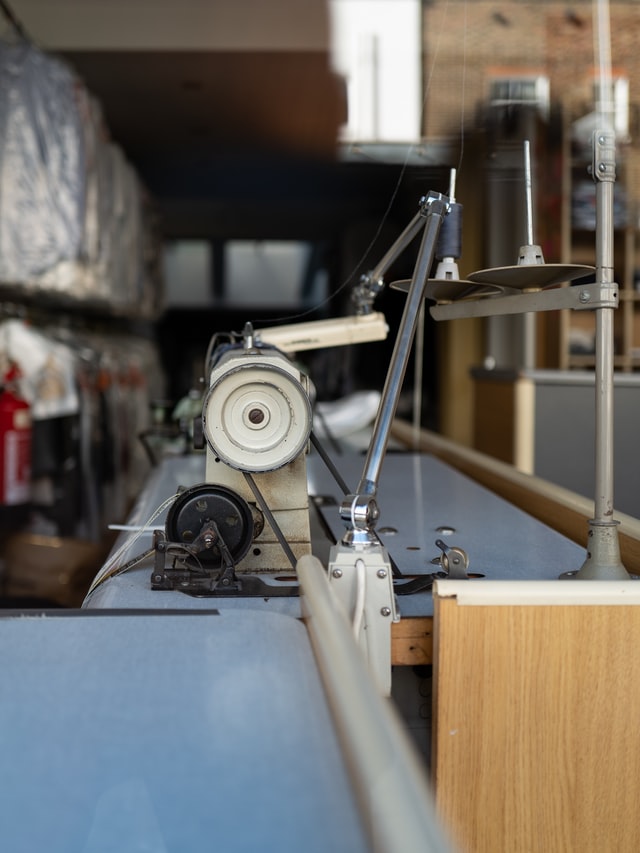If you have to name one thing in the constant fashion industry, it will always be ‘Change’. Everything about the fashion industry is constantly changing and there’s no single reason. Season, trends, fabrics, and colors are just to name a few key factors in the industry that play a major role. But have you ever considered how ethical these practices are towards the environment? Have you ever thought about moving towards increased ecological integrity and social justice? If our generation can bring about a serious change it would be with ‘sustainability.’
Sustainable Clothing is not just about the products or textiles, it concerns far more than that. From the hows and wheres of the production to its ultimate lifespan, it covers everything from the ecological, cultural, social, and financial system. The concept of sustainable fashion revolves around the mindful production of the item consciously taking care of all the environmental aspects that the fashion industry reaches.
The Four Major Issues
- Contamination and Consumption of Water – Use of water not only in production but also in the washing of clothes.
- Chemical Usage – The use of harmful chemicals in the production of a few textiles.
- Energy Emission – Increased use of energy in the production of clothes i.e. washing, drying, and ironing of the clothes.
- Dumping of Waste – The amount of waste material ignited or sent to landfill.
How Did the Concept of Sustainability and Fashion Come Up?
Until the 1950s, the fashion industry was more of a tailored, made-to-fit approach. During that time the clothing came up at a comparatively higher price. Creating a large consumer appetite due to a longer trend cycle due to slower production. Until after World War ll which led to economic prosperity. As the purchasing power of consumers increased so did the production.

With the increase in consumerism, textile production was also ramped up. But in 1974 after signing the Multi Fibre Agreement – MFA, the United States, and other countries followed a quota system which resulted in a decrease in the number of apparels from the importer. Resulting in a weaker garment industry and creating a heightened manufacturing cost of the apparel. This caused an increase in the demand for cheap clothing.
It was during the 1990s, that retailers started focusing more on sustainability and fashion. A number of big retailers such as Nike started moving towards sustainability initiatives. After the 1992 Rio Earth Summit, brands like ESPRIT and Patagonia started to look out for ethical sources for their raw materials. As the 21st century approached, numerous technological innovations helped in upcycling the material, enhancing traceability, and reducing the supply chain. The impact of these changes can now be seen in Gen Z buyers and youngsters.
Were Sustainable Clothing Brands Always There?
Fashion is considered the third-largest polluter as it is slower than the other two sectors in its environmental impact. After the year 1990, the concept of sustainability became more prominent and a number of brands started taking active participation in the ethical sourcing of their raw materials.

Today, more and more companies have successfully integrated economic, environmental, and social issues into their business operations. Around the same time in the 1990s ‘eco-movement which was similar to sustainable fashion began. Under the movement companies like Esprit started their ‘Ecollection’ and Patagonia created awareness regarding the environmental impacts of the fashion industry.
Thanks to these movements by various brands, Today we realize how badly these practices are hurting the environment and the people. The sustainable fashion movement is growing and gaining importance, and many consumers are changing the way they consume fashion. The awareness amongst the consumers is leading to recycling and reusing of the clothes and the acceptance of vintage clothes is becoming more and more common.
Is Sustainable Clothing Cost-Effective?
The term affordability is very subjective. What is affordable for one may not be affordable for another. It highly depends upon the income and personal situation. There are sustainable brands that are very expensive and are not accessible to many people. One thing that we need to keep in mind as consumers is that we need to differentiate between what we actually want and need. Of course, there are a number of brands that offer sustainable fashion at a comparatively affordable price.

There are hundreds of vintage stores and charity shops that offer second-hand fashion garments at a fraction of the price. On the other hand, there are brands that offer good fashion at a price similar to the prices of high street brands many of us usually shop from.
But can sustainable fashion really be cost-effective? The answer is yes. Many sustainable brands are already affordable. Especially when we understand how great second-hand shopping can be. The term ‘thrifting’ is becoming extremely popular nowadays not just because of how affordable it is but because it highly encourages the recycling and reuse of fashion garments.
‘R’ of Sustainable Clothing: Recycle, Reuse, and Repair
RECYCLE
With the change in season, trend, and style we want to change what we wear. But what to do with the old dress that you haven’t worn in years? You can’t throw it away in the trash because it will end up in a huge pile of landfills. So isn’t recycling the best way?
There are numerous ways in which you can recycle your old clothes. You give your old t-shirt a new life by creating different things with it. For eg it can be repurposed as makeup removing pads, grocery bags, cushion covers, or maybe headbands.
You can also donate your old clothing to brands that can recycle them. Brands like Patagonia, Nike, and Swedish Stockings run different recycling programs that can be your best bet.
REUSE
There are a lot of stores in the market that promote the reuse of clothes. You can either donate your clothes to these stores or buy pre-owned fashion pieces from these stores to change your wardrobe.
Also, under the reuse of your clothing, you can donate your pieces to a family member or a friend who would love to wear them. Rather than buying new clothes every time on a special occasion, it is best to reuse the fashion to support sustainability. We as consumers need to normalize reusing our outfits.
REPAIR
Repairing and restoring was something that our previous generation knew and supported a lot. This is where you learn new and innovative ways to repair your clothing piece to improve its lifespan. Getting yourself a compact sewing kit might be your best bet.
Once you get to a habit of repairing your old pieces, it will be very easy for you to improve the life of your garment. Patching and professional altering also fall under this category.
How to Avoid Fast Fashion?

We have got a few ways in which you can avoid fast fashion:
Update the Clothes You Already Have: Have a look at whatever you haven’t worn in the last six months and find creative ways in which you can make them more wearable.
Choose Second Hand: Give some thought to what items you need and think if you can work with second-hand items.
Keep Longevity in Mind While Buying: Always pick up the items you’ll be happy to wear over and over.
Don’t Buy Too Much to Donate Afterwards: make sure not to buy too many items just because you have donated your previously owned items. Remember sustainability is all about conscious consumption.
Conclusion
As consumers, we need to understand that it is important to be minimal as an approach to sustainable fashion. A conscious buying, reusing, and recycling of the fashion pieces we own can impact hugely on the environment. We must support brands that are conscious about sourcing, recycling, and following ethical and environmentally friendly practices. Once we become mindful of our choices and become more aware of what we choose and support, several mainstream brands may get inspired to choose these conscious routes.
Stay tuned to the blog for more interesting content on Fashion and Beauty!
Love!




